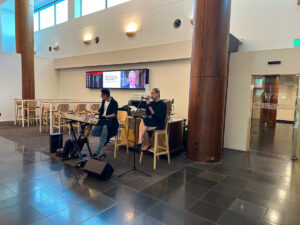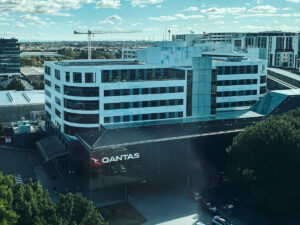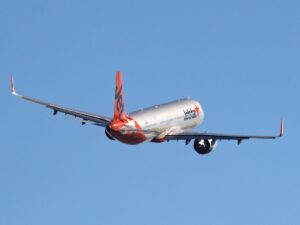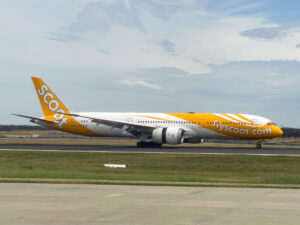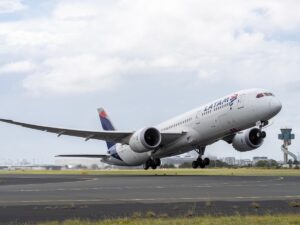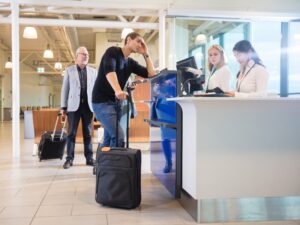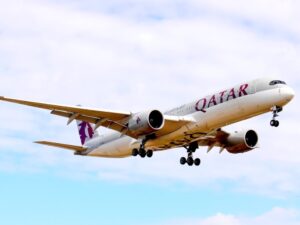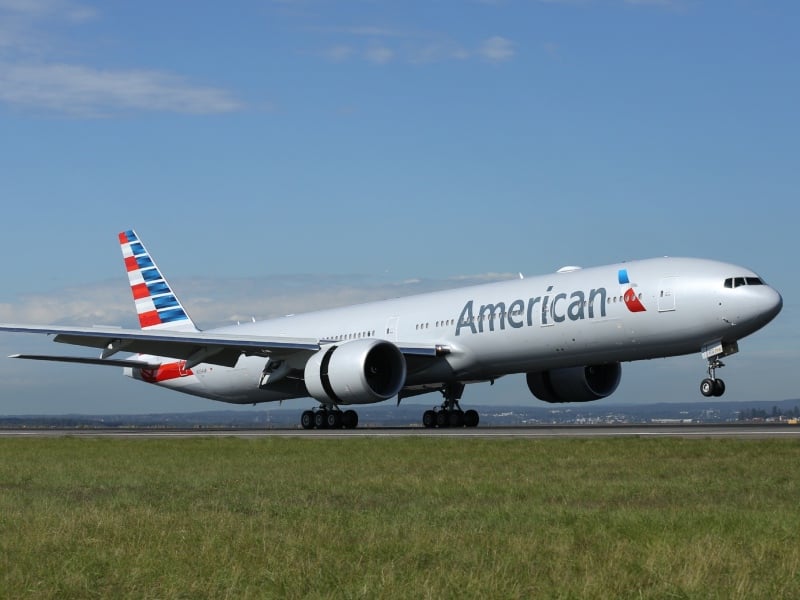
For Australians stranded overseas, it has never been harder or more expensive to get home. It’s also never been harder for the international airlines trying to repatriate Australians.
The Australian government’s extremely low international arrival caps haven’t just locked out many tens of thousands of Australian citizens who are desperate to come home. The caps have also made it commercially unviable for many international airlines to continue flying to Australia for the rest of 2021.
As a result, American Airlines has already axed its flights from Los Angeles to Sydney from the end of August until at least November – and possibly much longer. Other airlines are reportedly considering doing the same as they are racking up huge losses operating passenger services to Australian under the current conditions.
It’s not hard to see why. Last month, the Australian government halved the number of people allowed to arrive in the country each week. The weekly cap is now just over 3,000 people across all of the commercial airlines.
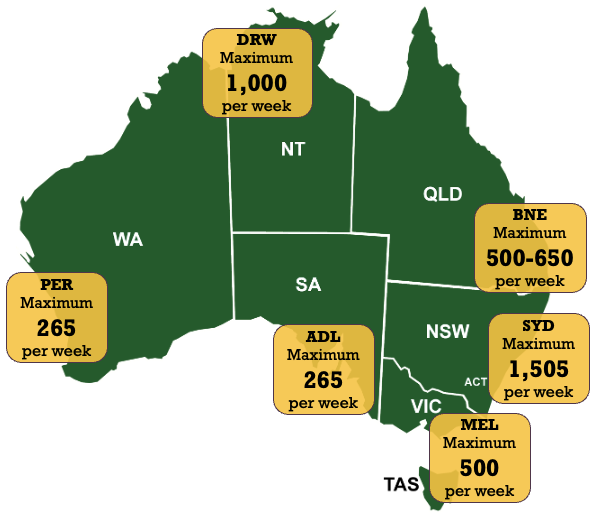
That’s just a tiny fraction of the number of people currently trying to fly home. Although the media is reporting that there are now around 38,500 Australians trying to come home, this is a gross underestimate as it is merely the number of Australian citizens registered with DFAT. The true number of people overseas who are currently trying to get to Australia is likely closer to 100,000-200,000.
Before COVID-19, around 500,000 seats were available on international flights to Australia every week.
But under the current caps, airlines are being restricted to carrying as few as 8 or 9 passengers on some long-haul flights to Melbourne and Perth, and around 25-26 passengers per flight to Sydney. Plus, according to the Board of Airline Representatives of Australia (BARA), which represents international airlines serving Australia, around a third of flights into Sydney Airport are now being given an allocation of zero passengers.
Last week, Singapore Airlines increased its airfares on tickets from the UK to Australia. A full-fare Economy ticket from London to Sydney increased from around AU$2,700 to $3,300 one-way. And the lowest-priced Business Class tickets on Singapore Airlines have risen from roughly AU$9,250 to $11,750 – an increase of $2,500 on a one-way fare.
Even so, Singapore Airlines doesn’t have any seats available from the UK to Australia until October or November at the earliest anyway – and that’s just in Business Class. The next available Singapore Airlines flight from London to Sydney in Economy Class is next year.
Other airlines have removed lower-priced tickets from sale, while some continue to sell cheap tickets but are routinely “bumping” passengers booked on those lower airfares closer to the flight’s departure date.
The impact of the reduced arrival caps on airlines
After the government halved the arrival caps in July, airlines had no choice but to cancel the tickets of 50% of passengers who were already booked to fly with them to Australia over the coming months. As you would expect in a market-based economy, with supply suddenly cut in half, airfares to Australia skyrocketed and flight availability vanished overnight.
The following day, Health Minister Greg Hunt blamed the airlines for this and accused them of price gouging.
“I hope there is nobody who seeks a commercial advantage from difficult circumstances and that’s a strong, clear message,” Mr Hunt said.
What exactly did the government expect when they are forcing international airlines to operate long-haul flights with as few as 8 or 9 passengers, all while tens of thousands of Australians are desperately trying to book a flight home? Demand is high and the extreme shortage of supply, which has led to higher airfares, is directly caused by the government’s own actions!
For airlines, the alternative is to stop flying to Australia altogether – as American Airlines has already done.
A senior international airline official based in Australia told Australian Frequent Flyer that their airline is losing millions of dollars by continuing to operate to Australia. This official said that the international arrival caps were making it extremely difficult to maintain services to Australia and that their focus is no longer on making a profit, but trying to minimise losses. If it wasn’t for valuable cargo, airlines would be losing even more money.
Some larger airlines have already reduced the frequency of their flights into Australia, with some also now consolidating all flights into Sydney Airport as it is no longer viable to serve multiple ports. According to BARA, this has already reduced the number of flights into Australia by around 20% since the arrival caps were halved.
“Operating international flights is expensive, costing $8,000−10,000 per hour in fuel and crew costs alone for medium haul”, BARA Executive Director Barry Abrams said.
“Costs also increase when flight schedules are disrupted through government-mandated changes to operating requirements and passenger restrictions that must be implemented with little prior notice. Airlines also pay air navigation fees to Airservices Australia, which are based on aircraft weight and distance travelled, and average about $7,000 per arriving flight,” Abrams said.
But with so few passengers now allowed on each plane, Abrams says that the “cost per passenger equation” has become terrible for airlines and passengers.
“International aircraft arriving into Australia pre the pandemic used to average about 220 passenger per flight, allowing them to spread their expenses over many passengers. International airlines now have about 1/8th of the previous passenger numbers per flight but still largely the same amount of operating costs,” Abrams said.
On outbound flights departing from Australia, the opposite problem exists. There are no outbound travel caps, so plenty of capacity is available. But demand is suppressed as most Australians are banned from leaving the country. So, flights departing Australia are relatively empty and airfares are low.
International arrival caps to be reviewed later this month
When the federal government announced last month that arrival caps would be reduced by 50%, this was initially only until the end of August 2021. A decision has not yet been made to extend the cap reduction into September and beyond.
But after last week’s National Cabinet meeting, Prime Minister Scott Morrison suggested that the significantly reduced caps would remain in place until 70% of the Australian adult population was fully vaccinated against COVID-19. That is unlikely to happen until early next year, which would be terrible news for both airlines and the many Australians stuck overseas. If the reduced arrival caps remain until next year, the majority of Australians currently trying to return home will not be able to do so this year – that would be mathematically impossible.
To make matters worse, BARA says that more international airlines are considering withdrawing services to Australia if the caps are not increased next month.
“A number of international airlines have told BARA that they are continuing with their scheduled committed flights until the end of August but flights from September onwards will be reviewed in light of decisions by National Cabinet on the arrivals caps to apply from 1 September.”
You can join the discussion about the reduced arrival caps on the Australian Frequent Flyer forum: Australia to Reduce Incoming Int. Passenger Capacity from July 2021
And if you’re trying to fly to Australia during COVID-19, you can check out the guide or join the discussion here: Travelling to Australia During COVID-19 (Discussion)

